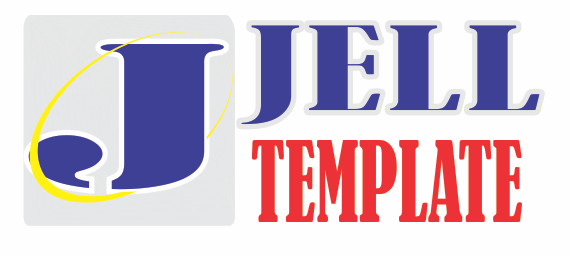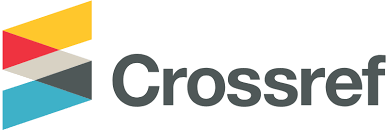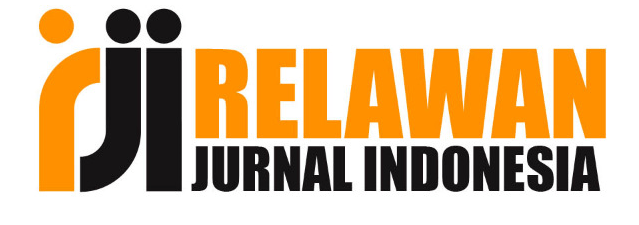A Study on Figurative Language Used in the Selected Songs of The “Encanto” Movie’s Soundtrack
Abstract
Practically, this research engages literary works to critically examine the figurative language represented in recent Disney animated films’ soundtrack, “Encanto”, which was released in 2021. Meanwhile, the urgency of this research is the need of thorough understanding of figurative language in the song’s lyrics. In relation to which, the objectives of this research is to find the kinds, the most dominant usage and general meaning of figurative language used in the selected songs of the original soundtrack of Disney’s animated film “Encanto”. As for the works of this research, it is to unpack the constructions of the figurative language through an analysis of the figuration of the Disney movie’s soundtrack. In this matter, this research analyze the lyrics which are discursively embodied in these Disney movies in complex and contradictory ways, for such and therefore Disney works on and through these bodies are then accordingly undertaken to fix and contain the ideological constructions of language, literature, and culture. Since language gives people the spirit and symbolic of expressions, in order to gather the aforesaid objectives, the researchers use qualitative method with descriptive approach, by gathering information mainly from books and international journals. The researcher discovered nine different kinds of figurative languages namely metaphor, simile, metonymy, irony, personification, paradox, hyperbole, synecdoche, and idiom. Apparently the researcher identified that the most figurative language used in such Disney’s animated film “Encanto” is metaphor.
References
Aspers, P., & Corte, U. (2019). What is Qualitative in Qualitative Research. Qualitative Sociology, 42(2), 139–160. https://doi.org/10.1007/s11133-019-9413-7
Azmi, D. N., Hidayat, D. N., Husna, N., Alek, A., & Lestari, S. (2023). A discourse analysis of figurative language used in English storytelling on BBC Learning English. Leksika: Jurnal Bahasa, Sastra Dan Pengajarannya, 17(1), 32. https://doi.org/10.30595/lks.v17i1.16249
Fadaee, E. (2011). Symbols, metaphors and similes in literature: A case study of "Animal Farm" Journal of English and Literature, 2(2), 19–27. Retrieved from http://www.academicjournals.org/ijel
Guan, J. (2009). The Cognitive Nature of Metonymy and Its Implications for English Vocabulary Teaching. English Language Teaching, 2(4), 179–183. https://doi.org/10.5539/elt.v2n4p179
Harya, T. D. (2017). an Analysis of Figurative Languages Used in Coelhos’S Novel Entitled “Alchemist.” PREMISE JOURNAL:ISSN Online: 2442-482x, ISSN Printed: 2089-3345, 5(2), 46. https://doi.org/10.24127/pj.v5i2.815
Hutauruk, B. S. (2019). The Use of Figurative Languages on the Students’ Poetry Semester V at FKIP Universitas HKBP Nommensen. Journal of English Language and Culture, 9(2), 128–137. https://doi.org/10.30813/jelc.v9i2.1690
Kalisz, R. (2013). A concept of general meaning: Selected theories in comparison to selected semantic and pragmatic theories. Research in Language, 11(3), 239–249. https://doi.org/10.2478/v10015-012-0024-6
Khairunnisa, E. (2022). FIGURATIVE LANGUAGES USED IN ROBERT FROST ’ S Selected Poems. ELITERATE : Journal of English Linguistics and Literature Studies, 2(3), 50–59.
Kusmirayanti, N. P. S., Nova Winarta, I. B. G., & Suastini, N. W. (2022). Figurative Languages Found in Frozen Movie Selected Songs. IJELAL (International Journal of English Learning and Applied Linguistics), 2(1), 1–13. https://doi.org/10.21111/ijelal.v2i1.5686
Milana, H., & Ardi, H. (2021). An Analysis of Figurative Language in The Song Lyrics By Saif Adam. English Language and Literature, 9(2), 325. https://doi.org/10.24036/ell.v9i3.111364
Nur, E., Dewi, F., & Hidayat, D. N. (2020). Inv HVWLJDWLQJ ) LJXUDWLYH / DQJXDJH LQ 3 / RVH < RX WR / RYH 0H ´ 6RQJ Lyric, (2018), 6–16.
Nurcitrawati, V., Kareviati, E., & Atmawidjaja, N. (2019). Figurative Language Analysis in Disney Songs. PROJECT (Professional Journal of English Education), 2(4), 494. https://doi.org/10.22460/project.v2i4.p494-500
Purnama Sari, W. (2021). Kinds of figurative language in three songs of Disney movies original soundtrack. LADU: Journal of Languages and Education, 1(3), 107–114. Retrieved from http://creativecommons.org/licenses/by/4.0/
Rafatbakhsh, E., & Ahmadi, A. (2019). A thematic corpus-based study of idioms in the Corpus of Contemporary American English. Asian-Pacific Journal of Second and Foreign Language Education, 4(1). https://doi.org/10.1186/s40862-019-0076-4
Reyes, A., Rosso, P., & Buscaldi, D. (2012). From humor recognition to irony detection: The figurative language of social media. Data and Knowledge Engineering, 74, 1–12. https://doi.org/10.1016/j.datak.2012.02.005
Rosita, H. E., Purwanto, B., & Rosyidi, M. I. (2019). An Analysis of the Symbol in Westlife’s Song Lyrics. Rainbow: Journal of Literature, Linguistics and Cultural Studies, 8(1), 60–64. https://doi.org/10.15294/rainbow.v8i1.29231
Siagian, Y. E. B., & Englishtina, I. (2022). an Analysis of Figurative Language Used in the Song Lyrics in the Moana Movie. LINGUAMEDIA Journal, 3(01), 1–16. https://doi.org/10.56444/lime.v3i01.2903
Wibisono;, R. T., & Widodo, P. (2019). An Analysis of Figurative Language in Alice in Wonderland Movie. P Language and Literature > PR English Literature, 19–30. Retrieved from http://eprints.umm.ac.id/id/eprint/56626
Copyright (c) 2024 Suhendar Suhendar, Avrillia Kezia Brenda .K

This work is licensed under a Creative Commons Attribution-NonCommercial-ShareAlike 4.0 International License.
Retained Rights/Terms and Conditions of Publication
1. As an author you (or your employer r institution) may do the following:
*make copies (print or electronic) of the article for your own personal
*Every accepted manuscript should be accompanied by "Copyright Transfer Agreemen" prior to the article publication.









